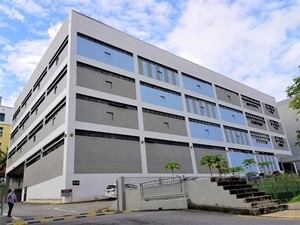
The hike in Q4 came as occupancy rates climbed to 89.9%, its third consecutive quarterly increase.
Prices and rents for industrial spaces increased 1% and 0.1% quarter-on-quarter respectively during the fourth quarter of 2020, showed JTC data on Thursday (28 January).
For the whole of 2020, prices and rents still fell 2.7% and 1.5% respectively.
The hike in Q4 came as occupancy rates climbed to 89.9%, its third consecutive quarterly increase.
Brenda Ong, Executive Director for Logistics & Industrial at Cushman & Wakefield, said it also marks the highest level of occupancy rates for the industrial market since Q1 2016.
In Q4 2020, total available stock rose by 38,000 sq m, significantly slower than the 188,000 sq m average quarterly increase seen in the last three years. The 357,000 sq m increase registered in 2020 was the lowest yearly increase since 2005.
JTC noted that about 2.7 million sq m of new industrial space is expected to be completed this year, of which 43% are single-user factory space. It revealed that around 0.5 million sq m of projects were delayed from last year due to COVID-19’s impact on the construction sector.
“Delays in completion could continue for some industrial building projects, as the construction industry faces constraints on manpower and raw material supplies due to the pandemic,” said JTC.
Ong said the increase in prices and rents is “a reflection of stable demand for industrial space amidst limited new supply in 2020 due to construction delays”.
“The industrial market has been a beneficiary of COVID-19 accelerated trends such as higher adoption of e-commerce which has spurred demand for prime logistics facilities and higher levels of remote working and the adoption of 5G technology has spurred demand for semiconductors and electronics,” she said.
Meanwhile, Desmond Sim, Head of Research for Southeast Asia at CBRE, said that while the increase in upcoming supply may put some pressure on overall occupancy, factory rents may be supported by “increased demand from the electronics and biomedical sectors, with Singapore’s 5G plan and vaccine roll-outs in place”.
“The overall warehouse pipeline remains subdued. This, coupled with continued demand from third-party logistics, food logistics and e-commerce players, could contribute to stable warehouse rental growth,” he added.
Looking for a property in Singapore? Visit PropertyGuru’s Listings, Project Reviews and Guides.
Related Articles:
Singapore warehouse rents remain stable in 1H 2020
Investors turn to Southeast Asia’s warehouses in times of uncertainty
Rents for cold store warehouses to increase amid Singapore’s quest to be a vaccine hub